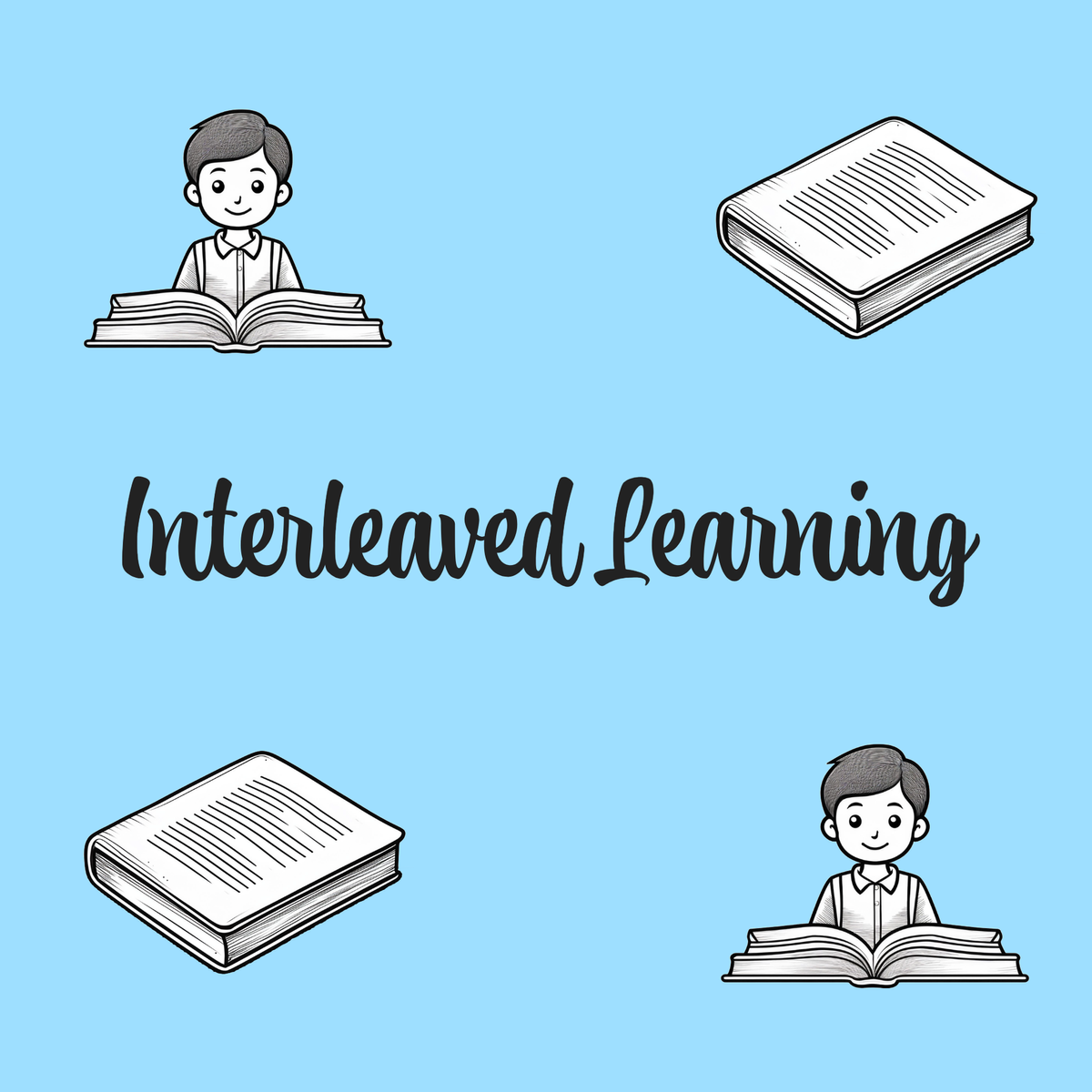Interleaved Learning: Mixing It Up for Better Retention

I hope you're all doing well as we settle into the rhythm of 2025.
Today, I want to share something that’s been a game-changer for my learning process; interleaved learning. This method isn’t new but incorporating it into my studies has brought some exciting breakthroughs, especially with my ongoing journey in learning German.
What Is Interleaved Learning?
Interleaved learning is all about mixing up different topics or types of problems during a study session instead of sticking to one subject for an extended period (which is called blocked learning). By shuffling between subjects, you force your brain to constantly retrieve information and adapt, which can lead to stronger memory connections and better long-term retention.
For example, instead of studying German vocabulary in one uninterrupted block, I now mix it up with grammar drills or even a bit of another language I'm dabbling in. This switching not only keeps my mind agile but also helps me see connections between different aspects of the language.
My Personal Journey with German
I recently returned from a holiday in Austria - a trip that turned into a real-life language lab. Before the trip, I’d been learning German sporadically, struggling with consistency. But once I was there, I realised that even basic vocabulary could open up a whole new world of connection and understanding. I managed to order coffee, ask for directions, and even exchange a few pleasantries in German. That experience was a powerful reminder that learning isn’t just about textbooks - it’s about real-world application.
After my trip, I decided to ramp up my German practice. Instead of simply repeating vocabulary lists, I started to interleave my learning sessions. I mixed vocabulary review with grammar exercises and listening to German podcasts. This shift not only made the sessions more engaging but also improved my recall. I noticed that I could remember words and phrases much better, even when I wasn’t actively studying them.
Why Interleaved Learning Works for Me
- Enhanced Memory: Constantly switching between topics forces my brain to retrieve information, strengthening neural connections. It’s like a workout for my memory - challenging but highly rewarding.
- Increased Engagement: Interleaving breaks the monotony of blocked study sessions. Instead of feeling stuck with one repetitive task, I’m always encountering something new. It keeps the learning process fresh and exciting.
- Better Real-World Application: Mixing different elements of language study better mirrors real-life conversations. In Austria, I experienced first-hand how a mix of vocabulary, grammar, and listening skills created a smoother interaction. Now, my study sessions reflect that holistic approach.
- Flexibility: This method allows me to adjust the focus based on my progress. If I find certain vocabulary is slipping, I can intersperse more targeted review sessions without overhauling my entire study plan.
Blend Your Way to Success
Interleaved learning has transformed my approach to learning German and, more broadly, the way I tackle new subjects. It’s not just about sitting down with a textbook and repeating the same information; it’s about actively engaging with the material, challenging your brain, and making connections that stick.
I encourage you to try interleaving in your next study session. Whether you’re learning a new language, mastering a skill, or simply exploring new ideas, mixing up your study methods might just be the key to unlocking better retention and a more enjoyable learning experience.
What do you think? Have you tried interleaving your learning before? I’d love to hear your thoughts and experiences - drop me a note or reply to this email.
Did you enjoy what you read? Don’t miss out on weekly tips like these - subscribe now to stay on top of your personal growth journey.
